20F The only thing I encourage are the consumption & cultivation of psychedelic mushrooms, the right of all marginalized people to self defense & dangerous self discovery. Lúgh Abú! Biji Rojava!
Don't wanna be here? Send us removal request.
Text
374 notes
·
View notes
Text
One thing I didn’t realize before reading Against the Grain was how dependent early states were on slavery and coercion. I would have guessed that they had lots of it, sure, but I wouldn’t have guessed that they would totally fall apart if they didn’t have slavery and coercion. Almost no one who wasn’t at the top wanted to be in an early state, keeping the state’s population where they were creating surplus for the elites was the project of statecraft. They won’t just naturally make surplus either, you have to force them to do it.
An early state’s population tends to run away and die fast (early city dwellers have worse nutrition and higher disease rate than hunter-gatherers), so the state had to frequently go get more population by waging war and bringing back the captives.
If the purpose of war was largely the acquisition of captives, then it makes more sense to see such military expeditions more in the light of slave raids than as conventional warfare.
You also acquire material loot, horses, cattle, etc in the raid. And burn the defeated villages, so the captives have nothing to go back to.
The most obvious advantage is that the conquerors take for the most part captives of working age, raised at the expense of another society, and get to exploit their most productive years. In a good many cases the conquerors went out of their way to seize captives with particular skills that might be useful—boat builders, weavers, metal workers, armorers, gold- and silversmiths, not to mention artists, dancers, and musicians.
James C Scott lists three reasons shy slavery was crucial in early Mesopotamian states:
To be the property/reward of the elites
To get labor for textiles, which were Mesopotamian states’ main export to non-state peoples who paid with resources which early states couldn’t do without, and also couldn’t produce on their own, like metals.
Uruk basically had a textile gulag at one point that engaged as many as 9000 women (at a time when Uruk’s population was ~45,000)
To get labor for onerous work like canal digging and wall building, which normal non-slave subjects won’t do without high rebellion risk
There isn’t much information about how male war captives were used in Mesopotamia, but Greco-Roman states would use them for the most brutal work: stone quarrying, timber felling, pulling oars in galleys. This was work that needed doing for state projects, but was hard to force its normal population to do. “The numbers involved were enormous, but because [the male war captives] worked at the sites of the resources, they were a far less visible presence—and far less a threat to public order—than if they had been near the court center. It would be no exaggeration at all to think of such work as an early gulag, featuring gang labor and high rates of mortality.”
Also, one really interesting point the book brings up that I’d never considered:
Only much later, when the world was, as it were, fully occupied and the means of production privately owned or controlled by state elites, could the control of the means of production (land) alone suffice, without institutions of bondage, to call forth a surplus. So long as there are other subsistence options, as Ester Boserup noted in her classic work, “it is impossible to prevent the members of the lower class from finding other means of subsistence unless they are made personally unfree. When population becomes so dense that land can be controlled it becomes unnecessary to keep the lower classes in bondage; it is sufficient to deprive the working class of the right to be independent cultivators”—foragers, hunter-gatherers, swiddeners, pastoralists.
Huh, yes. There was a world before this, where the parameters of human-created value were different.
1K notes
·
View notes
Text
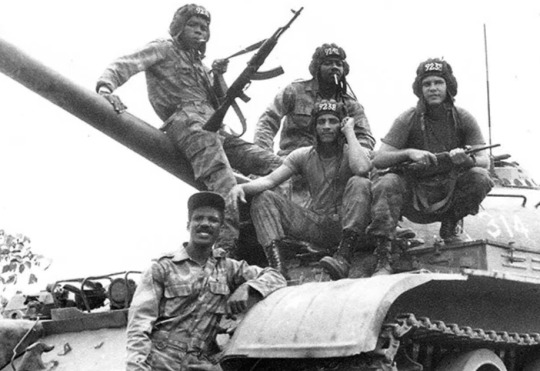
A Cuban tank crew in Angola. Wikimedia Commons
54 notes
·
View notes
Photo

On this day, 7 May 1954, French colonial forces in Vietnam were effectively defeated by the pro-independence Viet Minh in the battle of Dien Bien Phu. The French army, receiving significant aid from the US, had occupied the town of Dien Bien Phu the previous year in an attempt to cut supply lines for the anti-colonial forces. But the Viet Minh took them by surprise, surrounding the French base with 40,000 troops and eventually overrunning it on May 7. In the wake of the defeat, France was forced to surrender and, following a peace agreement, retreat temporarily into South Vietnam pending an election to unify the country within two years. These elections were later blocked by the US as they predicted a communist victory, leading to the direct US invasion of Vietnam. Learn more about this conflict in our podcast episode 14 with Noam Chomsky. Listen and subscribe on Spotify, or wherever you listen to podcasts, or on our website: https://open.spotify.com/show/3dqQUrBAmXgoU1Q6hcUnBX https://www.facebook.com/workingclasshistory/photos/a.296224173896073/1981685405349933/?type=3
216 notes
·
View notes
Text
i’m just gonna say it. body hair is not only ok for women to have, it’s actively sexy. and you can’t change my mind
8K notes
·
View notes
Text
The galleon San José is to be salvaged.
At the beginning of the 18th century, the Spanish treasure galleon San José sank off Cartagena. Since she sank off the coast of Colombia, it belongs to Colombia under current law. Even though the Spaniards had tried to lay claim to her. Now a Swiss salvage company, Maritime Archaeology Consultants Switzerland AG, was to recover her on behalf of Colombia. In return, the company had demanded 45% of the recovered treasure as a fee. Now Colombia has declared the wreck and its treasure to be Colombian cultural property, and according to the law, cultural property cannot be used to pay for a wreck, and now the country wants to salvage it itself.
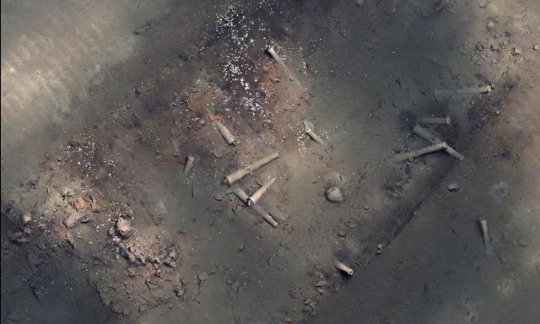
The wreck of the San José (x)
Unfortunately, the whole thing has a very unpleasant aftertaste, because the treasure is estimated at 17 billion US dollars, the salvage at about 70 million, because it is assumed by the UNESCO, Archaeologists and Historians that the country will put the finds on the art market after the salvage and sell them to fill the state coffers. It is also questionable what will happen to the wreck itself, because whether it will then be processed and exhibited.
In the end, one can only hope that the fears will not come true and that the San José and its treasures will be treated and exhibited appropriately.
54 notes
·
View notes
Text
The Kurdish revolution does not only face attacks from the fascist state of Turkey. Now Iraq is also attacking the mountainous region of Shingal. The population has promised to resist, and for this all international help and solidarity is essential! Action is needed now!
Antimidia and subMedia relay this message from comrades in Rojava.
Source
128 notes
·
View notes
Photo
This is why they’re called the Starvation army in this song https://www.youtube.com/watch?v=v8qoB1XwtHM Nulla Crux Nulla Corona my friends and comrades










DO NOT SUPPORT SALVATION ARMY
441K notes
·
View notes
Text
attack where you are strongest and your enemy is weakest, study the Art of War by Sun Tzu
If you do want to go toe to toe with cops don’t do it at the main protest in your area. Start shit across town and split the cops’ resources. “Open a second front” so to speak and take some of the heat off of the people they have absolutely no qualms about harming. Split up and open up a third front, a fourth. Keep moving and keep them moving.
50K notes
·
View notes
Text
“but shrouded black figures are scary!” not when ur muslim. its the funniest fucking thing. this is labeled on pinterest under shit like “classic horror” “scary phone wallpaper”
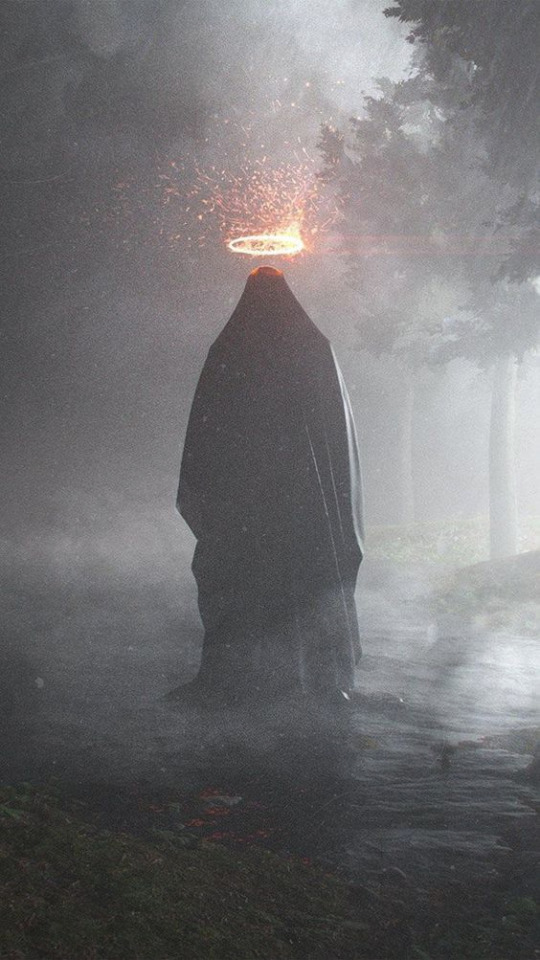
but that LITERALLY just looks like a niqabi or someone in a jilbab. Like Look at this pic of me (from a self photoshoot, now w/o the dramatic lighting and dark background)
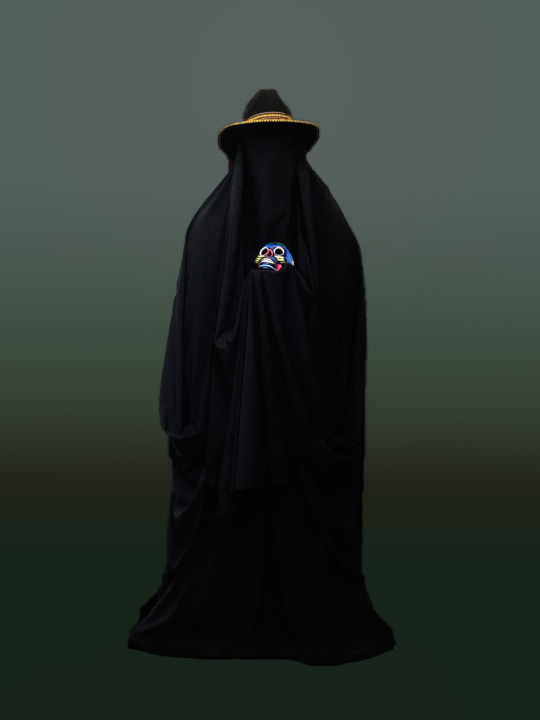
or this pic of me

or this pic of me
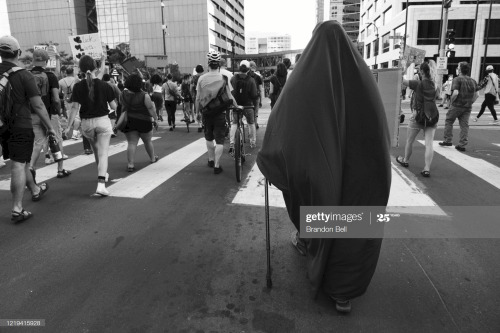
like its so funny i can’t be scared of shrouded figures it just looks like me.
94K notes
·
View notes
Note
Shout out to one of the top 8 Celtic Nations for having an embroidery tradition that harkens straight back through celtic art.
Hi! Bit of a niche question - do you know if the embroidery on Albania and Ahwaz’s costumes is a traditional Breton style?
Not me looking up Albania's eurovision entry wondering why the fuck their embroidery would be traditional Breton style before realizing it was probably your autocorrect butchering Alvan and Ahez, I'm sorry lmao.
But the answer is YES!

Those are their costumes, and I gotta say they are fucking dope. Not the first time traditional Breton clothes inspired modern outfits (Jean-Paul Gautier did a whole collection at some point) but I really love their take on it.
Here is an example of the traditional version:

This style is actually pretty local to a small part of Brittany, what we call the Bigouden country, it's in the South-West:
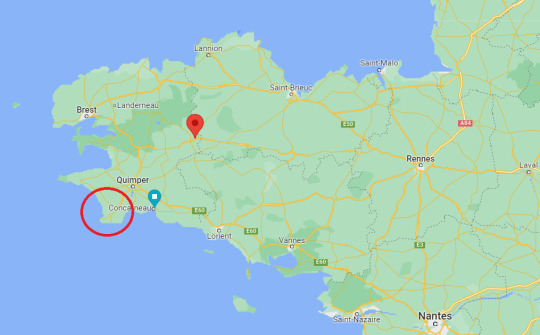
Red circle: approx where Bigouden country is
Red dot: Carhaix, where the women from Ahez went to school
Don't mind the blue dot with a square, that's where I parked my car once in Concarneau and google maps won't let me remove it.
Although the Bigouden country is a tiny part of Brittany, it has become quite representative of Brittany as a whole. One of the most popular symbols in Brittany is the little Bigouden girl drawn by the brand A l'aise Breizh. If you have ever been to Brittany, you saw her as a sticker on a car, I guarantee it. The tall hat you can see on the traditional picture is the first thing that comes to mind when people think of traditional Breton costumes even though it's very much a Bigouden thing (the round black hat worn by the man also comes to mind, but it is widespread to all of Brittany). I frankly don't know enough about historical costuming to tell you why those specific costumes from this specific part of Brittany eventually became representative of our culture, I low key want to blame Pierre-Jakez Helias' book "Le Cheval d'Orgueil" (pretty much his autobiography where he recounts his life in a small Bigouden village during the first world war, it was super popular and nowadays it's considered a primary source in anthropology) but who knows. I think it's rad anyway.
Also disclaimer I absolutely do not come from the Bigouden country. You see the big ol' emptiness in the middle of the map because aside from Rennes the only cities that actually develop in Brittany are the ones by the sea? Yeah that's where I come from. Somewhere. In the woods.
48 notes
·
View notes




